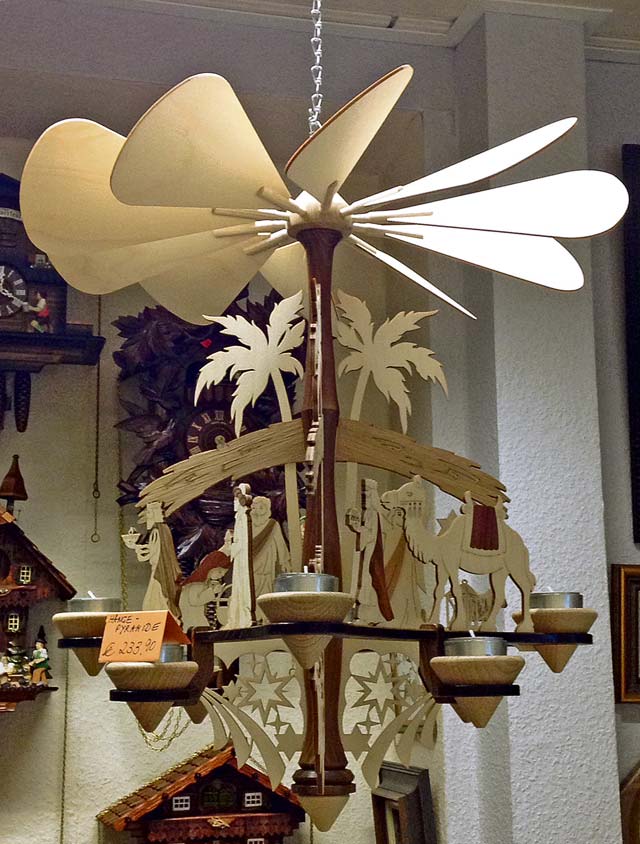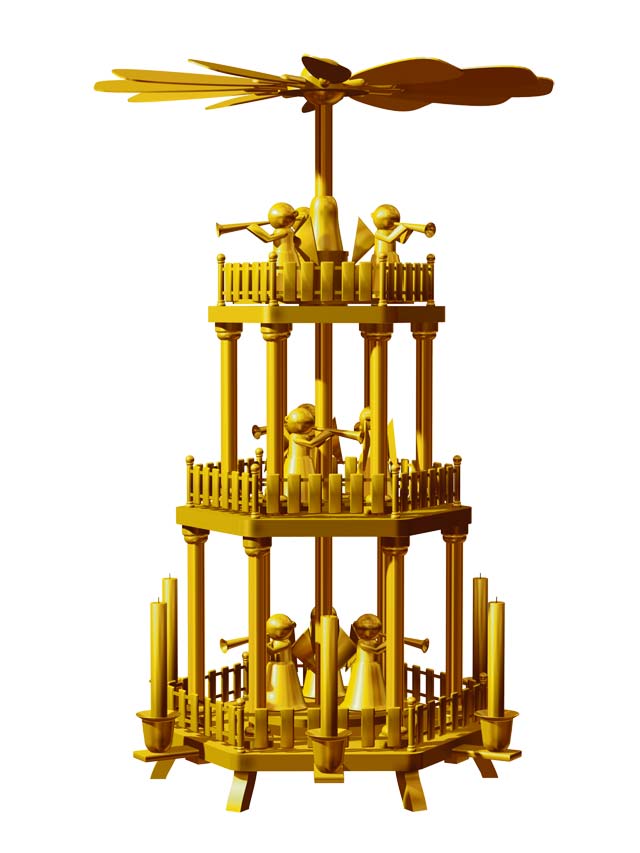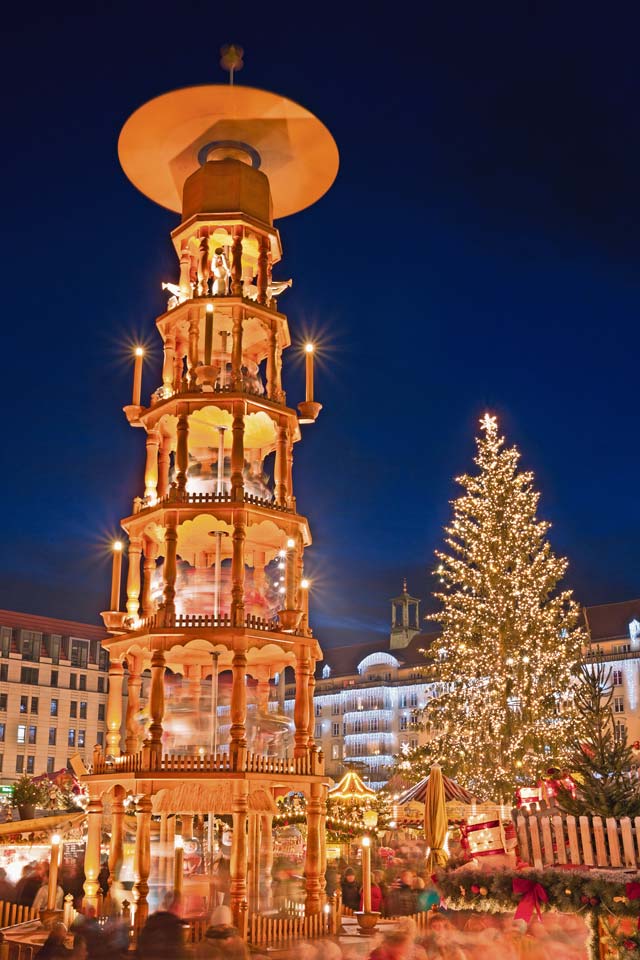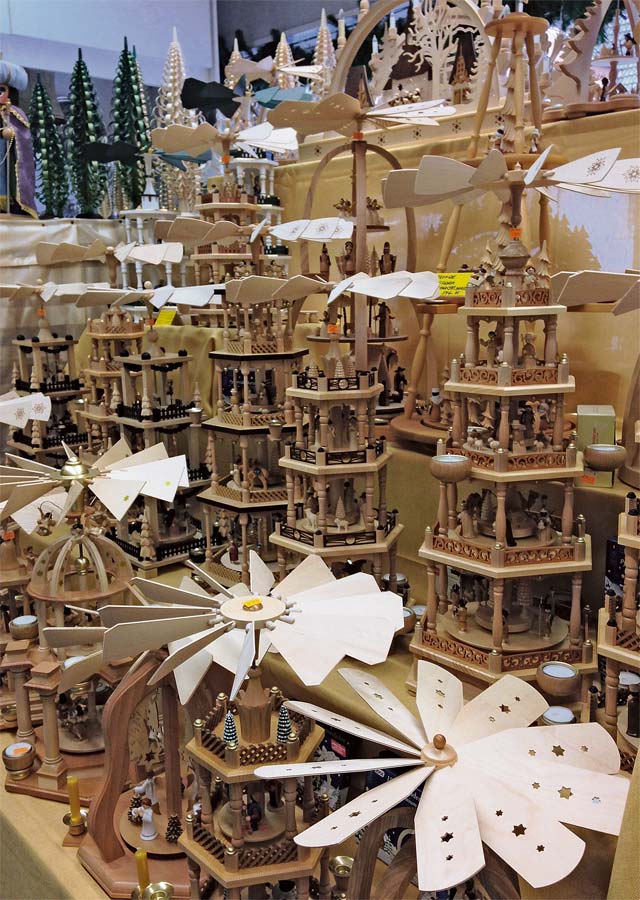



Tucked within the Erzgebirge mountains, small villages devote themselves to creating the lore of all baubles Christmassy. A village called Seiffen has been the epicenter of operation Christmas for more than 100 years. Sure, the minimum requirement for getting into the Christmas spirit is putting up a Christmas tree. Yet, here in Germany, another tradition preceding the tree takes center stage. And it all has to do with fire (OK, maybe not all, but the most eye catching ones do!).
Say hello to the Christmas pyramid.
The Christmas pyramid is thought to predate most other Christmas decorating traditions. In the Middle Ages, it was traditional in the south to bring evergreen branches into the home and hang them. The greenery was a spirit and morale booster — the original treatment for seasonal affective disorder. People wanted life and light. In northern Europe, most homes relied on traditional candles to provide the same trick. Combining greenery with candles, The Christmas pyramid later unified these traditions and became a symbol of the season.
The commercial aspect of the wooden German ornaments evolved from the Erzgebirge region. In the 17th century, mining was the big business of the area. When mining ceased, many miners turned to woodworking for a pastime, and later, an occupation. Prior to the modern pyramid we enjoy today, the design of the pyramid started with a “Lichtergestell,” or light stand. They were constructions made of four poles, decorated with evergreen boughs, tied together at the top and lit with candles. Later, the Christmas tree replaced the Lichtergestell. In the Erzbirge region, where mining of the Ore Mountains was a central industry, the shape looked like a capstan. The Christmas pyramid was therefore born from the heart of the mining community, with the spirit of fuel and fire at its core.
Large, small, delicate or sturdy, the “Weihnachtspyramide,” or Christmas pyramid, is an essential part of the beloved season.
Finding genuine, handmade Christmas products is now a tedious task. A few local places offer the best selections and service.
The best shop around the KMC is Wagners. Frau Wagner lets customers shop and handle the wares without interference, but easily answers any questions with a big smile and easy laughing. Many refer to her as “Mrs. Christmas” due her congenial nature. Most importantly: everything in her shop is genuine European, mostly German from the Erzgebirge Mountains. There are always new items from new artisans that make coming back each year to shop a real treat.
Perhaps you’d like to travel to the epicenter of Christmas decorations. If so, take a road trip to Seiffen, Germany. The 14th century village is now a tourist dream for finding millions of glorious Christmas staples. The whole town feels fueled by angel dust and candlelight. If you’re a Christmas fanatic, you won’t be disappointed with a weekend spent in the area.
Once a family selects and displays their unique pyramid, it becomes easier to spot how prevalent they are throughout Germany. Huge pyramids are often displayed in the middle town during Christmas market season. It makes going home to your own pyramid that much more fulfilling.
Be both forewarned and awed: The best pyramids are handmade out of delicate wood. Most have thin platforms depicting various traditional themes that rotate in a carousel-like fashion. The spinning typically is powered by candlelight, which fuels propellers above with their rising heat. This can pose a danger, so make sure you buy authentic pyramids, use the right candles, and always provide supervision in order to prevent a dangerous mishap from occurring.
It may not be Christmas without a fire, so be sure to make it the kind you look at and not the kind you feel.


